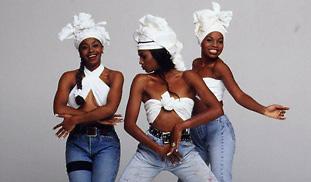|
 |

Volume No. 1 Issue No. 92 - Monday February 5, 2006 |
Zouk - Tracing the History of the Music to its Dominican Roots
 Neva Wartell (Reprinted from National Geographic) Neva Wartell (Reprinted from National Geographic)

With seeds planted in the French Antilles and cultivated in the studios of Paris, zouk exploded onto the music scene in the late 1980s, taking over dance floors throughout Europe, Africa and the Caribbean.
Guadeloupans Jacob Desvarieux and the brothers Decimus are widely credited for having created the zouk phenomenon in the high-tech recording studios of Paris in the 1980s.
Yet they themselves acknowledge that zouk was merely a natural progression from the "kadans-lypso" of such bands as Exile One (led by singer Gordon Henderson), Grammacks and the Midnight Groovers �all from the tiny island of Dominica � whose late '60s Caribbean fusion set the stage for some of the region's most significant musical developments � such as zouk, "new generation" compas, and soca � in the decades that followed.
The 1960s were the heady days of the independence era throughout the former
European colonies across the globe, and new national identities were being
expressed through music.
 In these years, Exile One was the primary Antillean band
performing the cadence (kadans) music that was common to the entire
French-speaking Caribbean.
In these years, Exile One was the primary Antillean band
performing the cadence (kadans) music that was common to the entire
French-speaking Caribbean.
The band moved from Dominica to Guadeloupe and developed a style that layered onto the kadans form elements of American rock and soul, as well as the Latin and West African rhythms coming into popularity at the time.
From there, lead singer Gordon Henderson went on to found a highly influential kadans fusion band, the Vikings of Guadeloupe � of which Kassav' co-founder Pierre-Eduard Decimus was a member.
(As recently as the 1990s, the notable singer Tanya Saint-Val also launched her career with the Vikings, distinguishing herself as a jazz/rhythm & blues singer who crafts her smooth French and Creole vocals around sophisticated zouk-based orchestrations.)
Meanwhile, on Martinique, two other seminal groups were experimenting with
the local "chouval bwa" carnival music: the roots revival band Pakatak, founded
by Kali along with Jean Philippe Marthely, D�d� Saint Prix, and dancer/singer
Marie-Line Laupa (all three of whom were to join Kassav'); and Marc� et
Tumpak, led by Pago Bernard (Marc�), who added an electric kadans- and
biguine-influenced sound which became known as "zouk chouv."
The 1970s brought West African funk and Central African rumba into the mix.
During that time, the Congolese band Ryco Jazz had taken up residency in
Martinique from 1967 to 1972.
This influence later surfaced in the guitar style
Jacob Desvarieux brought to zouk � reinforced by the fact that zouk musicians
living in Paris increasingly played and recorded with African musicians.
And,
inevitably, Ryco Jazz's sound came to include local rhythms of biguine, kadans and
Haitian compas. Mention also has to be made of Coup� Clou�, Haiti's only
entertainer to have a West African career, most notably in Ivory Coast and
Senegal.
He adopted the African style of two lead guitars, and his style of compas is
still danced to in Africa and the French Caribbean.
Throughout the 1980s influences continued to travel in all directions. Many
of the best musicians from Guadeloupe and Martinique were either living in
Paris or touring there.
Jacob Desvarieux, a heavy metal rock guitarist who had
spent very little time in the Antilles, met up with George and Pierre-Eduard
Decimus, who had a deep knowledge of kadans, biguine, gwo ka, and the other
rhythms of their native islands. And so began the story of Kassav', the band whose
name became synonymous with zouk.
|
|

|





